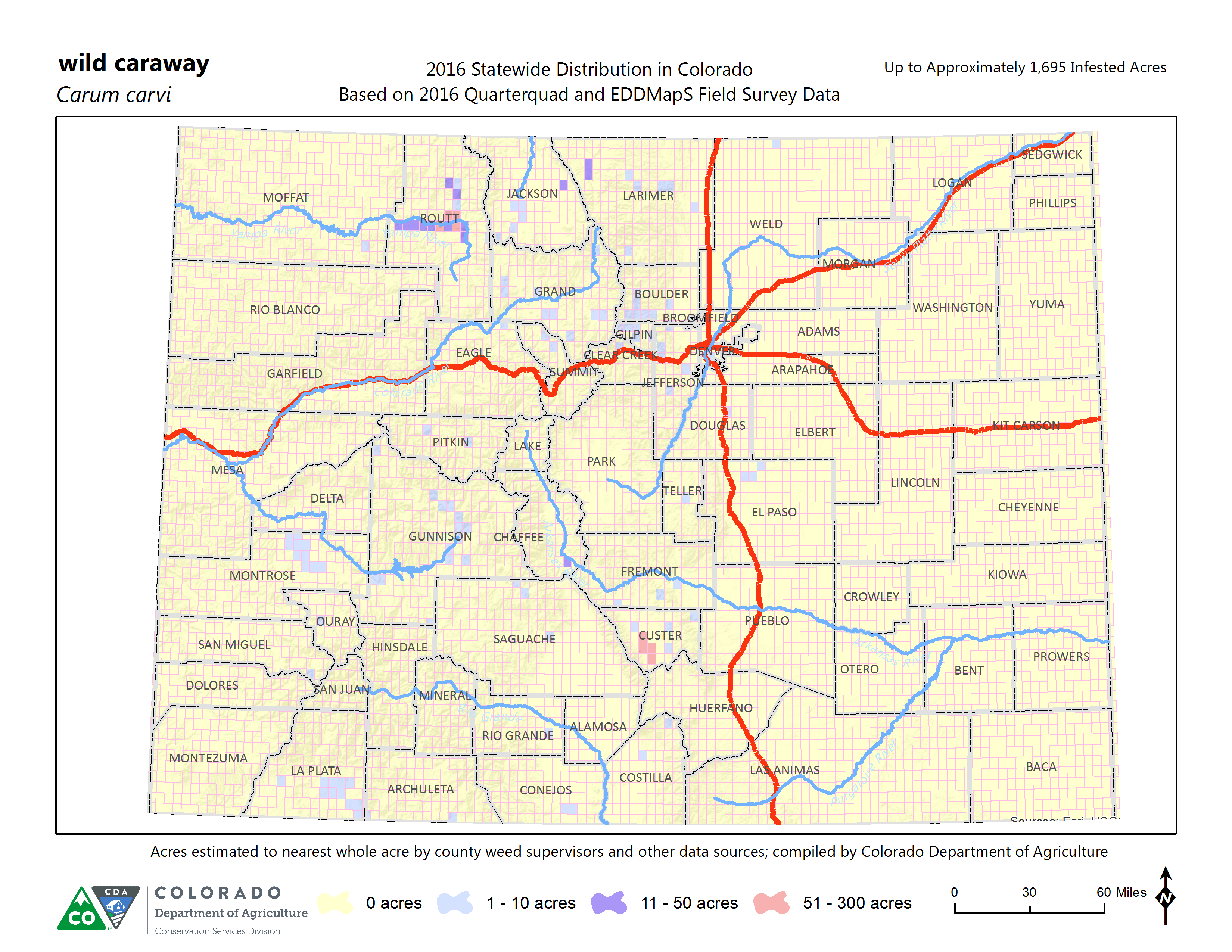Wild caraway
(Carum carvi)
Wild caraway is a biennial or sometimes perennial forb. It produces a low-growing rosette in the first year. The flowering stalk bolts the second year of growth, and sometimes the third year. Wild caraway is a prolific seed producer; under ideal conditions, each plant can produce several thousand seeds. Stem leaves are finely divided, and resemble those of carrots in shape but tend to droop more. Shoot leaves are alternate and normally oblong or oval in shape. Flowers are white or pinkish in color, small, and occur in terminal or lateral loose clusters at the top of stems. Each flower produces two seeds that are narrow, oblong, brown, and have five distinct linear ribs. Mature plants are 1 to 3 feet tall and have one or more shoots emerging from a single taproot. Shoots are slender, erect, branching, and normally hollow.
